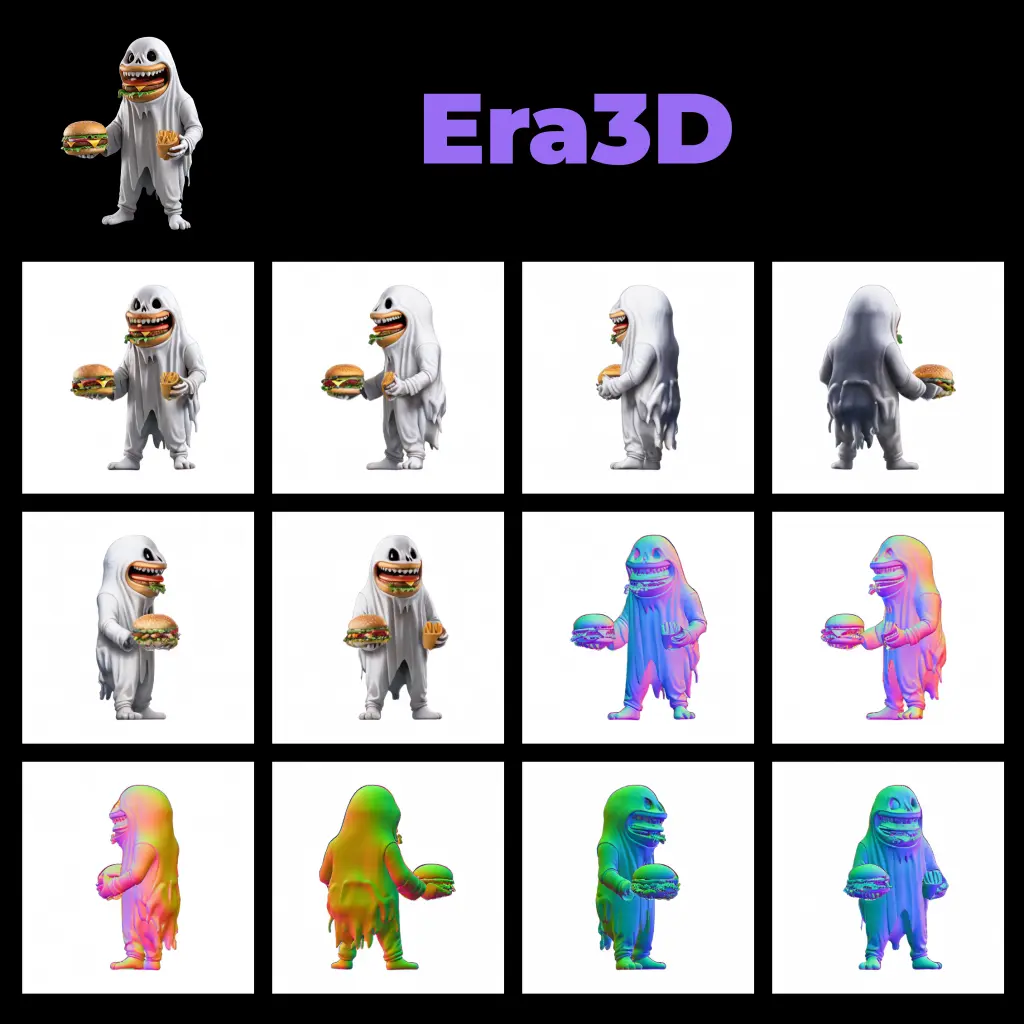ComfyUI Node: AniDocSampler
AniDocSampler
CategoryAniDoc
LucipherDev (Account age: 1820days) Extension
ComfyUI-AniDoc Latest Updated
2025-03-28 Github Stars
0.05K
How to Install ComfyUI-AniDoc
Install this extension via the ComfyUI Manager by searching for ComfyUI-AniDoc- 1. Click the Manager button in the main menu
- 2. Select Custom Nodes Manager button
- 3. Enter ComfyUI-AniDoc in the search bar
Visit ComfyUI Online for ready-to-use ComfyUI environment
- Free trial available
- 16GB VRAM to 80GB VRAM GPU machines
- 400+ preloaded models/nodes
- Freedom to upload custom models/nodes
- 200+ ready-to-run workflows
- 100% private workspace with up to 200GB storage
- Dedicated Support
AniDocSampler Description
Specialized node for sampling frames in AniDoc framework, ensuring smooth and coherent animations with advanced techniques.
AniDocSampler:
AniDocSampler is a specialized node designed to facilitate the sampling process within the AniDoc framework, which is used for generating and manipulating animated documents. This node is integral to the animation pipeline, allowing you to sample frames from a sequence of images or animations, thereby enabling the creation of smooth and coherent animations. The primary goal of AniDocSampler is to provide a robust and flexible sampling mechanism that can handle various input configurations, including controlnet images and reference images, to produce high-quality animated outputs. By leveraging advanced sampling techniques, AniDocSampler ensures that the resulting animations maintain consistency and visual appeal, making it an essential tool for AI artists looking to create dynamic and engaging animated content.
AniDocSampler Input Parameters:
anidoc_pipeline
This parameter represents the animation document pipeline that the sampler will operate on. It is crucial for defining the sequence and structure of the animation process, ensuring that the sampling is applied correctly within the context of the animation workflow.
controlnet_images
Controlnet images are used as input to guide the sampling process. These images provide a reference framework that helps in maintaining consistency across frames, ensuring that the animation follows a coherent path.
reference_image
The reference image serves as a baseline for the sampling process, providing a visual anchor that the sampler can use to align and adjust the frames. This helps in maintaining the visual integrity of the animation.
repeat_matching
A boolean parameter that determines whether the sampler should repeat the matching process. When set to true, it enhances the consistency of the animation by ensuring that similar frames are matched and repeated as needed.
cotracker
This dictionary parameter contains settings for the co-tracking process, which is used to track motion across frames. It includes options like tracking status, tracker type, grid size, query frame, backward tracking, and maximum points, allowing for detailed control over the motion tracking process.
fps
Frames per second (fps) define the speed of the animation. A higher fps results in smoother animations, while a lower fps can create a more choppy effect. The default value is 7, but it can be adjusted to suit the desired animation style.
steps
This parameter specifies the number of steps the sampler will take during the sampling process. More steps can lead to more refined results, but may also increase processing time. The default is set to 25.
noise_aug
Noise augmentation is used to introduce a level of randomness into the sampling process, which can help in creating more natural-looking animations. The default value is 0.02, providing a subtle amount of noise.
seed
The seed parameter is used to initialize the random number generator, ensuring that the sampling process can be reproduced. A seed of 0 means that the process is not deterministic, allowing for varied results each time.
motion_bucket_id
This parameter identifies the motion bucket, which is used to categorize and manage different types of motion within the animation. It helps in organizing and applying specific motion patterns to the sampled frames.
decode_chunk_size
Defines the size of the chunks that the sampler will process at a time. A larger chunk size can speed up the process but may require more memory. The default is set to 8.
device
Specifies the computing device to be used for the sampling process. The default is "cuda", which leverages GPU acceleration for faster processing.
dtype
This parameter sets the data type for the computations, with the default being torch.float16. This choice balances precision and performance, making it suitable for most animation tasks.
AniDocSampler Output Parameters:
The context does not provide specific output parameters for AniDocSampler. However, typically, the output would include the sampled frames or animation sequence that has been processed according to the input parameters and settings.
AniDocSampler Usage Tips:
- Experiment with the
fpsandstepsparameters to find the right balance between animation smoothness and processing time for your specific project. - Utilize the
cotrackersettings to fine-tune motion tracking, especially if your animation involves complex movements or transitions. - Adjust the
noise_augparameter to introduce subtle variations in your animation, which can enhance the natural feel of the motion.
AniDocSampler Common Errors and Solutions:
"CUDA out of memory"
- Explanation: This error occurs when the GPU does not have enough memory to process the current task.
- Solution: Try reducing the
decode_chunk_sizeor lowering thefpsto decrease the memory load. Alternatively, ensure that no other GPU-intensive applications are running simultaneously.
"Invalid device string"
- Explanation: The specified device in the
deviceparameter is not recognized. - Solution: Ensure that the
deviceparameter is set to a valid option, such as "cuda" for GPU or "cpu" for CPU processing.
"TypeError: unsupported dtype"
- Explanation: The data type specified in
dtypeis not supported by the current configuration. - Solution: Verify that the
dtypeis set to a compatible type, such astorch.float16ortorch.float32, depending on your system's capabilities.
AniDocSampler Related Nodes
RunComfy is the premier ComfyUI platform, offering ComfyUI online environment and services, along with ComfyUI workflows featuring stunning visuals. RunComfy also provides AI Playground, enabling artists to harness the latest AI tools to create incredible art.




